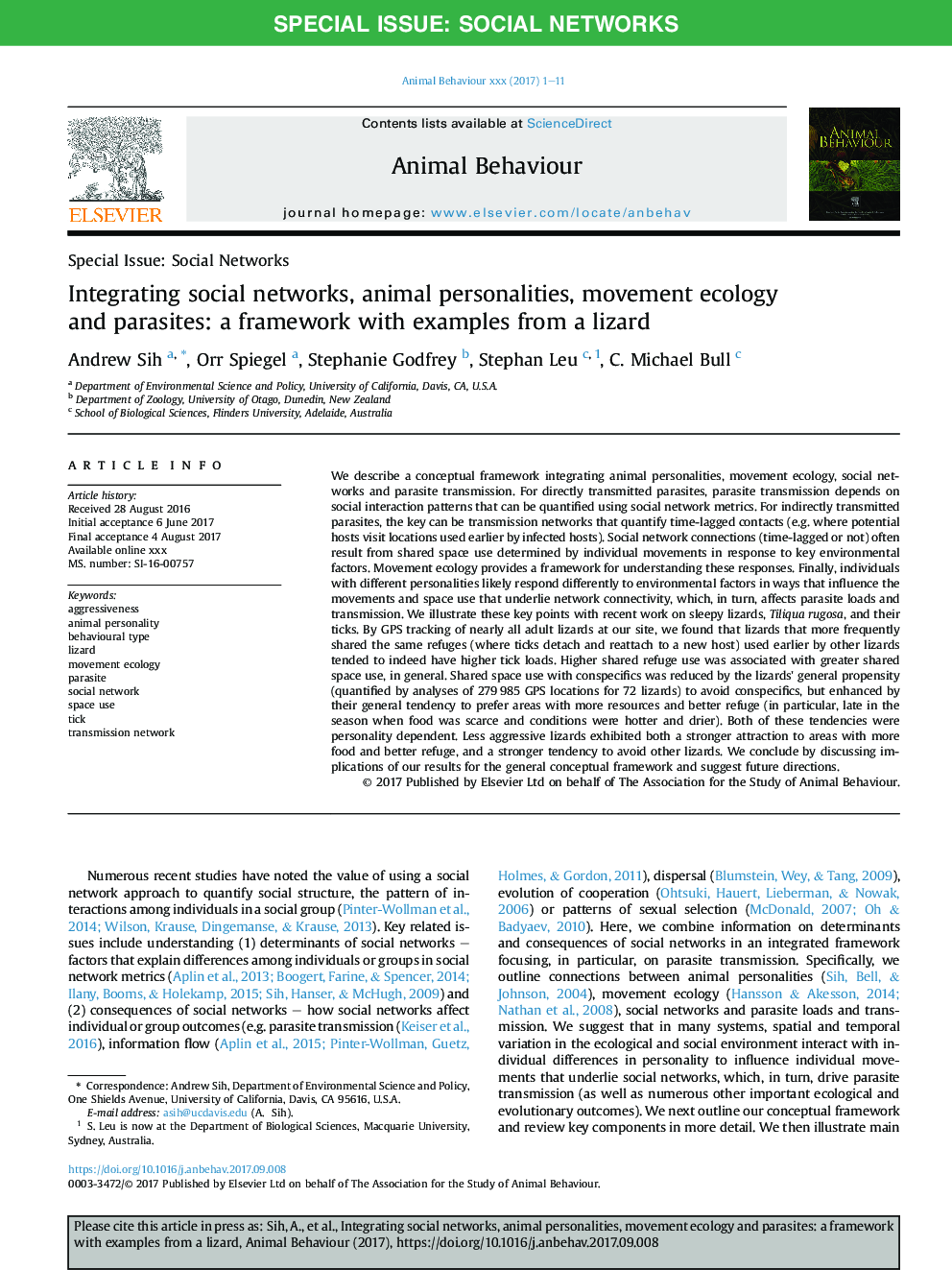| کد مقاله | کد نشریه | سال انتشار | مقاله انگلیسی | نسخه تمام متن |
|---|---|---|---|---|
| 8488697 | 1552192 | 2018 | 11 صفحه PDF | دانلود رایگان |
عنوان انگلیسی مقاله ISI
Integrating social networks, animal personalities, movement ecology and parasites: a framework with examples from a lizard
ترجمه فارسی عنوان
یکپارچه سازی شبکه های اجتماعی، شخصیت های حیوانی، محیط زیست و انگل ها: یک چارچوب با نمونه هایی از یک مارمولک
دانلود مقاله + سفارش ترجمه
دانلود مقاله ISI انگلیسی
رایگان برای ایرانیان
کلمات کلیدی
پرخاشگری، شخصیت حیوانی، نوع رفتاری، مارمولک، محیط زیست حرکتی، انگل، شبکه اجتماعی، استفاده از فضا، تیک شبکه انتقال،
موضوعات مرتبط
علوم زیستی و بیوفناوری
علوم کشاورزی و بیولوژیک
علوم دامی و جانورشناسی
چکیده انگلیسی
We describe a conceptual framework integrating animal personalities, movement ecology, social networks and parasite transmission. For directly transmitted parasites, parasite transmission depends on social interaction patterns that can be quantified using social network metrics. For indirectly transmitted parasites, the key can be transmission networks that quantify time-lagged contacts (e.g. where potential hosts visit locations used earlier by infected hosts). Social network connections (time-lagged or not) often result from shared space use determined by individual movements in response to key environmental factors. Movement ecology provides a framework for understanding these responses. Finally, individuals with different personalities likely respond differently to environmental factors in ways that influence the movements and space use that underlie network connectivity, which, in turn, affects parasite loads and transmission. We illustrate these key points with recent work on sleepy lizards, Tiliqua rugosa, and their ticks. By GPS tracking of nearly all adult lizards at our site, we found that lizards that more frequently shared the same refuges (where ticks detach and reattach to a new host) used earlier by other lizards tended to indeed have higher tick loads. Higher shared refuge use was associated with greater shared space use, in general. Shared space use with conspecifics was reduced by the lizards' general propensity (quantified by analyses of 279â985 GPS locations for 72 lizards) to avoid conspecifics, but enhanced by their general tendency to prefer areas with more resources and better refuge (in particular, late in the season when food was scarce and conditions were hotter and drier). Both of these tendencies were personality dependent. Less aggressive lizards exhibited both a stronger attraction to areas with more food and better refuge, and a stronger tendency to avoid other lizards. We conclude by discussing implications of our results for the general conceptual framework and suggest future directions.
ناشر
Database: Elsevier - ScienceDirect (ساینس دایرکت)
Journal: Animal Behaviour - Volume 136, February 2018, Pages 195-205
Journal: Animal Behaviour - Volume 136, February 2018, Pages 195-205
نویسندگان
Andrew Sih, Orr Spiegel, Stephanie Godfrey, Stephan Leu, C. Michael Bull,
